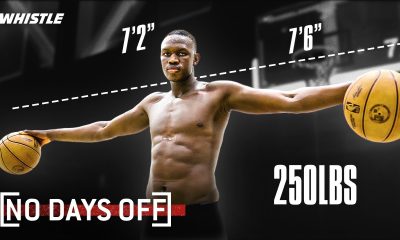Michael Brauner is a Senior Sports Analyst and Contributing Writer for Yellowhammer News. You can follow him on Twitter @MBraunerWNSP and hear him every weekday morning from 6 to 9 a.m. on “The Opening Kickoff” on WNSP-FM 105.5, available free online.
NIL
How creative activation unlocks sports marketing effectiveness

It is often the case in sports marketing that the most effective partnerships are also the most creative in their execution.
When it comes to delivering impact through sports sponsorship in particular, creativity and effectiveness go hand in hand. Sponsorship, as part of the overall marketing mix, sits somewhere between those two interconnected axes, depending on the sponsoring brand’s objectives, and its value can only really be judged on a case-by-case basis.
Over time, however, approaches to sports sponsorship have become increasingly scientific and sophisticated. Across the industry, advanced brand tracking tools, real-time measurement platforms and analytical insights are now widely used to inform strategy amid a growing emphasis on delivering business outcomes and proving ROI. This focus on data-led, objective performance is hugely important for brands investing significant sums in sports marketing, yet the role of creativity in driving value through sponsorship cannot be overstated.
Unlocking value through creativity
Today, an entire creative industry has grown up around sports sponsorship activation. Populated by creative and experiential agencies, production studios and talent managers, it exists to bring partnerships to life through compelling content and culturally relevant campaigns. Its overarching aim is to produce work that not only cuts through but also, most importantly, generates commercial value for brands and rights holders.
For those who operate in this space, sports marketing represents a form of creative art. Though a business that is intended to deliver against corporate objectives, it views sponsorship, at its core, as the expression of an idea, one which manifests in myriad different ways but consistently permeates the messaging and activation.
“At the end of the day, we are in a business, and a business wants to see results,” says Matt Hunt, executive strategy director at Manchester-based creative agency MATTA. “But I think it’s about what is the most effective way of achieving those? And often it’s creativity that unlocks that.”
Any brand worth their salt will enter a partnership with clear objectives in mind. It could be that they want to grow brand awareness, boost purchase consideration or drive direct sales – or, as is often the case, a mixture of all three, plus many potential others depending on the brand’s specific goals. But when brands rely too heavily on metrics alone, there is a risk the data ends up dictating creative direction rather than informing it.
“I think that the value of creativity in this space is sometimes overlooked,” continues Hunt, whose company works with the likes of the ATP, England Rugby, Clinique and Emporio Armani. “People are buying rights without necessarily maximising the value that they can take from them. And it is simply a badging exercise, which I think, for us, is dramatically underplaying the potential value that you could achieve through thinking about what you’ve got, how it aligns with your brand, with your objective, with the entity that you’re sponsoring, and activating that in a way which does engage and delight.”
Michelob Ultra’s creative, tech-led activations, such as its DreamCaster work featuring blind basketball fan and aspiring broadcaster Cameron Black, have earned the beer brand widespread marketing plaudits and delivered meaningful results
Viewed through the prism of creative effectiveness, sports sponsorship need not be measurable to be truly meaningful, says Hunt. For brand marketers under internal pressure to rationalise their spending decisions, there must naturally be a business case behind any sponsorship investment, with performance tracked according to identifiable KPIs. But in the minds of fans, marketing effectiveness really boils down to emotional impact and cultural relevance.
“We do feel that there is a possibly a lack of creativity in how some sponsorship is applied and activated,” adds Hunt, “and more just about marketing by numbers, rather than really taking the time to think deeply about how we are genuinely going to make an impact that people may possibly remember beyond simply our logo being on a shirt or on this LED board.”
Indeed, quantitative data seldom paints the full picture. Traditional measures of success, such as brand affinity, purchase consideration and social media engagement, provide only a limited view of marketing effectiveness. Often, it is the intangible, less easily quantifiable measures that reveal most about the performance of a partnership.
“The more unexpected it is, the more it will cut through creatively,” insists Hunt. “When something’s unexpected, a consumer brain opens up to take in new information, and it also becomes more remarkable, I think, on that basis as well.
“So the more unexpected you can make the partnership, but give it authentic meaning at the same time, that’s the perfect alchemy for making sports sponsorships work as hard as they possibly can.
“The power of the unexpected and the ability to disrupt is something that has to be grasped and utilised, and that only comes with a degree of creativity and flair in its execution.”
Some of the best work in sports marketing is indeed born of unconventional ideas or atypical collaborations. On the surface, a women’s skincare brand isn’t a natural fit for rugby, while an agricultural tyre manufacturer based in India doesn’t sit comfortably in European club basketball. Yet partnerships that appear incongruous at first glance are rarely ever random acts of marketing. On the contrary, they are often those which are underpinned by the soundest strategic rationale.
“I think that’s one of the powers of brands showing up in sport,” says Hunt. “It can be more remarkable if it isn’t naturally something that you would put together. Finding meaning in putting these two rather disparate things together is where the magic happens.
“If you create something that engages your audience in a way that they’re enthralled by, or taken aback by, that is ultimately going to be more effective than just simply creating visibility and awareness for something which doesn’t really have a sense of meaning behind it.”

MATTA’s ‘Powered Differently’ campaign – produced in collaboration with Premiership Women’s Rugby and Getty Images – was 100% powered by women, from the ideation and creative direction to the photography and curation.
Embrace the third space
“We really think about how we can become part of fans’ everyday life and part of fan culture,” says Alexander Michaelsen, executive creative director and board member at Jung von Matt SPORTS, a Hamburg-based agency whose brand client portfolio includes everyone from Adidas and BMW to Fanatics, Google Pixel and Spotify. “So what do they consume? How do they spend their day? How do they spend their match day? What’s the journey? And how can we be part of that journey in a way that complements, that makes it better, and doesn’t distract from what they want to consume?
“When talking to fans, you only get one chance as a brand to really hit it home and to set yourself up to become hopefully a loved brand. But there are also huge mistakes you can make if you don’t speak the lingo or if you don’t respect the culture, especially in Europe.”
Nowadays, so much of sports consumption happens in the so-called ‘third space’ – non-traditional channels and mediums including, but not limited to, social media platforms, online chat forums, WhatsApp groups, watch parties and live streams. In the third space, content is disseminated, dissected and debated organically in disintermediated discussions, filtered through the lens of discerning fans. Here, every piece of content has the potential to take on a life of its own, beyond the control of any publisher, and in the court of public opinion, of course, everything is open to interpretation.
Brands must earn the right to play in this subjective, ever-evolving and fragmented third space, bringing something that is authentic and additive, not intrusive and overengineered. In a world where feedback is constant, immediate and unfiltered, sentiment means everything. Reading the room is therefore paramount when gauging the impact of any creative output.
“The good thing about most of our campaigns is that they, in some shape or form, happen on social media, and you get a direct response,” says Michaelsen. “I often think this sentiment is as important as the facts and numbers behind it that you can measure, because people on social media may hate, they may love, but they don’t lie.
“They are brutally honest – and if you are doing a shit job, you get shit feedback. That’s the reality.”
@tobiasdahlhaus Gave the @Skoda UK Draw de France Strava challenge a go. Might not be the prettiest car in the world but at least you know it is one. Elapsed duration – 2h44 Elapsed distance – 68km #drawdefrance #stravaart #gpsart ♬ Ms. Jackson (Instrumental) – Outkast
Skoda’s ‘Draw de France’ activation around last year’s Tour de France engaged cyclists through Strava, encouraging them to get creative while driving participation
While social media heightens scrutiny and therefore increases the potential for reputational risk for sponsor brands, it can also lead to greater rewards.
Earned media coverage may be a traditional measure of success in marketing but in the fast-paced, memeified world of the third space, virality is now the holy grail. Bold ideas executed via riskier campaigns invariably cut through, for better or worse, and brands who are willing to step outside their comfort zone stand to benefit.
It is a cliché to say fortune favours the brave but dull ads are said to cost the marketing industry millions of dollars in additional media spend. In sponsorship as in traditional advertising, it is often the case that ambitious ideas fly, whereas conservative ones require far greater expenditure – normally on paid media – just to get off the ground. As Hunt analogises: “You can put lipstick on a pig, but it’s still a pig.”
In that sense, audience understanding is key. That is perhaps marketing 101 but in the highly pressurised, hyper-critical world of sport, with its minefield of fan allegiances and tribalist mentality, the adage rings particularly true.
Creating impactful, emotionally resonant campaigns that capture the cultural zeitgeist and get people talking requires a willingness to constantly listen and adapt. Often, the strongest ideas are rooted in insight. Recent research by Lions Advisory found that brands with stronger insight development respond more effectively to cultural moments. Yet while online behaviour tracking and social media sentiment analysis can surface valuable real-time data, brands and agencies must be ready to conduct and act upon in-depth qualitative research as well.
“Every single thing that we do, every brief that we do, we will collaborate with fans on,” says Simon Luff, head of strategy at Ear to the Ground. “We’ll talk to those fans. We’ll understand what’s moving culture and how brands can show up in that culture in a way that’s really authentic and additive, rather than parasitic.
“I think having fan insight at the heart of every single decision – every creative decision, every strategic decision – and actually bringing fans into that creative process, is the way to really build more impactful collaborations.”
Crossover collaborations like FC Barcelona’s partnership with Spotify have huge cut-through potential, leveraging the reach and influence of two brands to engage a wider audience
Understanding what drives fan passions is crucial, particularly in the third space, says Luff. Utilising first-hand feedback enables brands to keep their finger on the pulse and connect “at a much deeper level”, he adds: “I think also having an acute understanding of how sport is merging and morphing into other worlds – into music, into fashion, into art, and into all of these other different cultural crossovers – enables you to play at the edges.”
But fan insight not only informs sponsorship strategy – it also helps shape the creative process for the agencies tasked with plotting activations.
As its name suggests, Ear to the Ground prides itself on listening to target audiences above anyone else. Its ‘fans to consumers’ approach has been built on an intelligence network of 12,500 sports, gaming and entertainment experts around the world, comprising a mix of fans, creators, influencers, producers, community leaders and business owners. The company has also developed proprietary AI-powered tools and specific methodologies to monitor cultural insights, analyse and foresee trends, test creative ideas, and ultimately enable its clients to make faster, more effective decisions.
“From there we’ll start thinking about how that strategy will then manifest through the third space: the types of formats, the type of talent that we might work with, and creators that we might work with in order to create the right types of content to connect with fans,” explains Luff. “That creative process will then bring the fans back in, and we’ll start co-creating with the fans as well. So we’ll test ideas and concepts with them born off that initial insight, and we’ll use that as a way to refine our creative development and ideation.”

Ear to the Ground was the creative agency behind Paris Saint-Germain’s Snipes Deck, a branded hospitality and experiential space at the Parc des Princes complete with DJ sets, local cuisine and a barber service
Creativity within constraints
Creativity, in the context of sponsorship, comes in many forms. The creative output invariably garners most of the attention, but that is not the only factor which sets great activations apart. Sometimes the best and most original work is produced when creative minds are forced to think, well, creatively.
Budweiser’s brilliant Bring Home the Bud campaign during the Qatar 2022 Fifa World Cup, where the consumption of alcohol was banned on the eve of the tournament, provides a high-profile case study for how brands, working closely with a partner agency, can turn a negative situation into a positive one if they are able to stay agile and reactive. But there are countless other examples of genuinely innovative work being produced when those involved are constrained by, say, restrictive commercial rights or budget limitations, or perhaps backed into a corner by timing or circumstance.
“Often the best ideas happen when you’re with the back against the wall and everything is against you,” says Michaelsen, who notes how smaller budgets, in particular, force creatives to think differently. “You just have to build the confidence in your own capabilities, surround yourself with good people and a good team, and stay close to your client.”

Budweiser’s ‘Bring Home the Bud’ campaign during the Qatar 2022 Fifa World Cup delivered a masterclass in crisis management and drove massive worldwide engagement on social media
According to Michaelsen, belief in the creative process is vital for sponsorship success. Brand-agency relationships must be built on trust, he says, and creative tension can lead to better results if the relationship is open and strong enough to withstand some friction. That dynamic is key to maximising the power of sponsorship, enabling brands to overcome marketing challenges and ultimately produce the most impactful work.
“We are the experts in the field of sports marketing and often a brand comes in that isn’t too familiar with that field, because maybe it’s their first sponsorship or partnership,” says Michaelsen. “So really challenging the brief and setting it up for success is the first crucial step. For us as an agency, often it’s not finding the answers, it’s finding those questions that deliver the answers.
“Being brave enough to open the doors to your process and let the client come in, I think, is important in a time where timings get shorter, budgets get tighter, and you can’t allow to do too many feedback loops that will then end up in some compromise that no one really likes.
“Often, as a creative, you want to protect your ideas as long as possible, to really make them shiny and perfect. But this is really where you have to build confidence and have to be also a good salesman to your client so that they trust you, so that this maybe unpolished idea can turn into something beautiful.”
Produced by SportsPro in collaboration with SportQuake, Impact X is a new annual initiative spotlighting the most impactful, creative and effective partnerships in sport. Click here to find out more.


NIL
Hunter Yurachek dishes on ‘new financial commitments’ for Arkansas football

Arkansas vice chancellor and director of athletics Hunter Yurachek formally introduced Ryan Silverfield as the 35th coach in the football program’s history on Thursday afternoon to assembled media in the Broyles Center. As part of the hour-long introductory press conference, Yurachek answered a plethora of questions regarding the financial support surrounding the football program.
Back in September, following the Sam Pittman’s dismissal after six seasons as coach, Yurachek admitted that the football program didn’t have the necessary funding to compete with the majority of SEC programs in football. At the time, he seemed optimistic that would change in lock-step with a new coaching hire.
As part of his opening statement on Thursday, Yurachek revealed the funding has indeed improved. The goal is to build a championship program at Arkansas and, as Yurachek put it, this new commitment was the first step in the process of accomplishing that goal.
“The top-down alignment of a new financial commitment from our Board of Trustees, the University, the department of athletics and so many generous donors that have taken place over the last several weeks was the first step to us being all in on this goal,” Yurachek said. “This financial commitment will push us to the top half in key SEC items such as our assistant coaches pool, our strength and conditioning staff, our support staff pool and our talent acquisition through revenue sharing and legitimate NIL.”
Yurachek was peppered with questions regarding this ‘new financial commitment’ but wouldn’t divulge any specifics on the budget or amount of newly committed funds, citing a competitive advantage as the reason not to. He did, however, say the investment was “significant.”
“I think it’s our competitive advantage not to give details of what that is other than to tell you that it is a significant investment in all aspects of our football program,” Yurachek said. “That will move us to the top half of spending in all of those categories I mentioned in the Southeastern Conference.
“I don’t believe we need to be at the top of spending, we need to be somewhere where we’re really competitive and Ryan and I are on the same page with where we are. It allows him to go out and hire the assistant coaches that he believes he needs to hire to build a championship program and to invest in our revenue sharing and legitimate NIL to make sure that we acquire the best talent for our roster.
“I want to make sure that we have a competitive advantage. I think once you put your financials out there and tell other schools what you’re doing, that allows them the opportunity to come meet you where you are or exceed where you’re at.”
While the financial commitment is improved according to Yurachek, he also revealed they’re still not to the level they want to be from a fundraising standpoint. He explained that the program is off to a good start with the last few months, but they still haven’t accomplished their goal.
“We’re not to the finish line, but I will tell you from a fundraising standpoint, we’re off to a great start,” Yurachek said. “With the athletic department is going to commit is significant and that’s how we’re going to reallocate some of the dollars that we have. The board is going to make a commitment to our football program as well, and all of that is significant. I don’t want to tie down a specific dollar amount to any of that, because I don’t want to limit what we can do
a couple of different revenue sources that we’re looking through, both through our foundation and through the athletic department, and then just how we reallocate money that we’re currently spending within our department, whether that’s from a salary standpoint, an operational standpoint, but we feel like we can do some things differently to be more efficient, that we can reallocate more dollars to our football program.
Yurachek explained that some of the financial commitment from the athletic department will come from reallocation of what they’re currently spending. He mentioned salaries, operations and that there are other ways they can be more efficient which helps push more money toward football.
When asked how fans will be able to notice the new financial commitment behind the football program, Yurachek pointed to Silverfield’s recruiting and staff additions among other things.
“It will come when he announces some of the people on his staff, that will be the first piece,” Yurachek said. “Then when you see how our roster comes together after the transfer portal officially opens in January, you see we’ve got a couple of young men in here (Quincy Rhodes and KJ Jackson) that are coming back. That’s a part of the financial commitment that we’ve made into our football program, to be able to retain those high-caliber, very talented young men.”
It’s not just Yurachek and his staff helping get Arkansas football in better financial shape. Silverfield himself has hit the ground running in that department and has made a difference in just a matter of days. Yurachek shared a story of the new Razorbacks head coach leaving quite the impression on one donor at Thursday’s basketball game.
“Let me touch on his fundraising prowess,” Yurachek said of Silverfield. “He doesn’t even know this yet. He was in the courtside club last night, and he was doing what he does in building relationships with donors. Right off the bat, he walked away from one donor, the donor came up to me and committed to a seven figure gift to a football program, just with a brief five minute encounter.”
NIL
New Arkansas coach Ryan Silverfield says it won’t take long to rebuild the program

FAYETTEVILLE, Ark. (AP) — Ryan Silverfield had a second stop to make Thursday after his first press conference since being hired as Arkansas football coach.
He had to face the people he needs to win over, the ones the Razorbacks need to increase their spending so they can compete with the SEC’s power programs.
Silverfield signed a five-year, $33.5 million deal to take over in Arkansas earlier in the week. He had coached Memphis since the 2020 season, plus a single game with the Tigers as interim head coach in 2019. Memphis qualified for a bowl in every season with Silverfield at the helm and peaked in 2024 with an 11-2 record. The Tigers hold an 8-4 record ahead of a likely bowl game.
Those kinds of results at Arkansas would be a boon. The Razorbacks’ season concluded Saturday with a loss to Missouri. That ended a 2-10 season with an 0-8 record in the Southeastern Conference, the third season in the last seven Arkansas finished with those marks.
“This program is built on pride, resilience and toughness, and it’s time to bring it all back,” Silverfield said at the press conference. “Being all in together, we will rebuild it, we will earn it, and we will make this state proud.”
Finances were one of the biggest points in both the press conference and the public introduction a few hours later. Arkansas athletic director Hunter Yurachek has made a point for the last year that the Razorbacks need more contributions for NIL funds in order to compete at a higher level in the SEC. The first audible announcement over the loudspeaker before Silverfield took the dais was one asking for money.
NIL war chests are tight-lipped secrets across college football. But Arkansas’ football attendance, which equates to revenue earned, ranks fifth from the bottom in the SEC. Both Silverfield and Yurachek said finances were a key topic during the interview and contract negotiations.
“I think it’s our competitive advantage not to give details of what that is, other than to tell you that it is a significant investment in all aspects of our football program that will move us to the top half of spending in all of those categories I mentioned in the Southeastern Conference,” Yurachek said. “I don’t believe we need to be at the top of spending. We need to be somewhere where we’re really competitive and Ryan and I are on the same page with where we are.”
Quarterback KJ Jackson and defensive end Quincy Rhoads Jr. both joined the press conference and announced they would return to the team in 2026. Jackson, a rising sophomore, took over as Arkansas’ starting quarterback for the final game of the season and is largely considered the future of the position. Rhoads finished in a tie for fifth in the SEC in sacks (8) and second in the league in tackles for-loss (17 1/2).
Silverfield told fans he doesn’t think a rebuild will take long.
“It’s not one of those things where we’re sitting here saying, ‘Hey, you know, Hunter, I need three years to rebuild this,’” Silverfield said. “No. We can start rebuilding the culture the moment we step down.”
___
Get poll alerts and updates on the AP Top 25 throughout the season. Sign up here and here (AP News mobile app). AP college football: https://apnews.com/hub/ap-top-25-college-football-poll and https://apnews.com/hub/college-football
NIL
Mitch Barnhart emphatically affirms Kentucky football’s NIL status – Kentucky Kernel
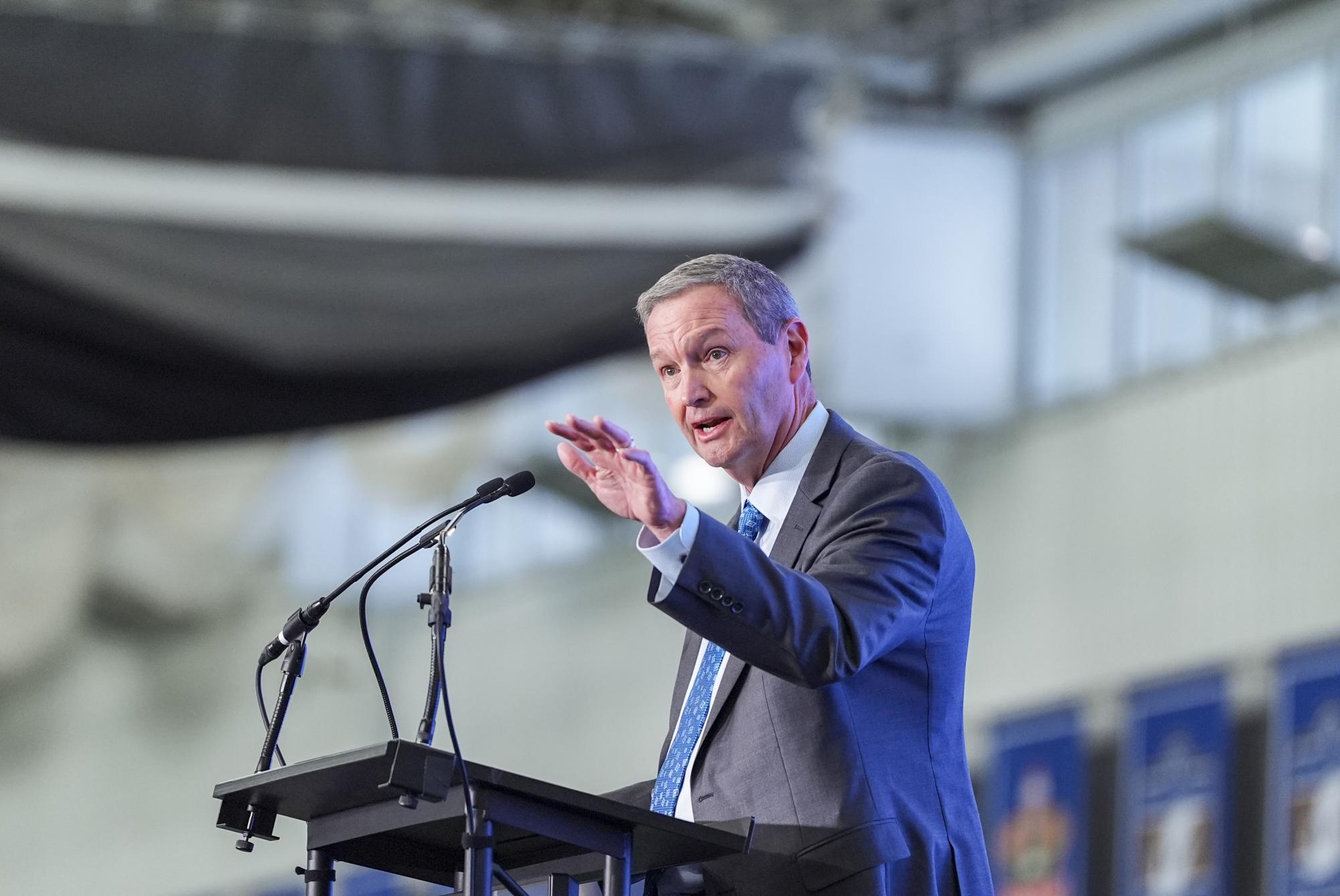
A new era of Kentucky football was celebrated yesterday as Will Stein was introduced as head coach and spoke to fans along with media for the first time.
As expected, NIL came up in this conference as it is the talking point of college sports all around the country.
The new head coach was the first to confirm that Kentucky is where it needs to be to compete for the players it wants under the new leadership.
“Yeah, of course, of course,” Stein said. “Mitch [Barnhart], Mark [Hill] laid out a great plan. Feel like we’re right there to be successful right away.”
To help navigate this process, it is believed that Pat Biondo will be joining the staff as a general manager.
The role has started to become more integrated into the sport in this rising world of NIL in order to have experts at the forefront of this process for recruiting and roster-building purposes.
Barnhart spoke with media after the introductory press conference and doubled-down on Stein’s take about NIL for the program in a fired response.
“We’re confident in what we’re doing and people ask that question 19 different ways, from all the stuff that’s been going on, and it’s exhausting. You know, enough, enough about have we got enough? We’ve got enough, and we’re working at it just like everyone else is working at it We’re no different,” Barnhart exclaimed. “They’ve got Learfield, we’ve got JMI, they’ve got Learfield, they’ve got playflight. So this notion that we don’t have enough is ridiculous. We’ve got enough.”
Another avenue that has caused several debates on NIL is the salary cap that limited the amount schools could directly share to athletes at $20.5 million.
This was meant to limit the amount schools could give players and sounds good in principle, but like most things when it comes to NIL, did not work that way.
A lot of schools have used deals outside the school that has inflated the money within college football programs well above the limit.
Some schools have even incorporated and expanded athletic departments into agency to secure the deals for these players that bend the rules just a bit.
Another major issue is that schools are making NIL promises part of recruitment for high schools players and transfers.
Within the given timeframe, there is nothing wrong with this, but since NIL, teams have been known to reach out to players when they are not allowed to.
This tampering expedited the process for getting Stein to Lexington to become the Wildcats next head coach.
“Make no mistake about it, we can talk about tampering, we can talk about no doing this, no doing that, they’re flat calling players all over the place, and there’s player movement everywhere,” Barnhart said. “So let’s not kid ourselves, so, yeah, to protect our roster, to protect our program, to protect recruiting, we had to move fast.”
However, while others might be not playing the rules and finding workarounds, that is not going to happen at Kentucky.
“We’ve got to resource it the right way. We got to assess talent the right way. We got to acquire it the right way. We’ve got to make sure we’re within the boundaries and the rules,” Barnhart said. “We’re not going to break the rules. That’s flat out. We’re not doing that alright, we will do it the right way. We don’t need to, we don’t need to do that. We’re good enough at what we do. We’ve got good people.”
With National Signing Day over and the transfer portal opening in January, it will not take long to see just how well Stein and Kentucky can compete with the rest of the SEC to recruit talent in this NIL era.
NIL
Vanderbilt QB Diego Pavia pleads to Trump for College Football Playoff executive order
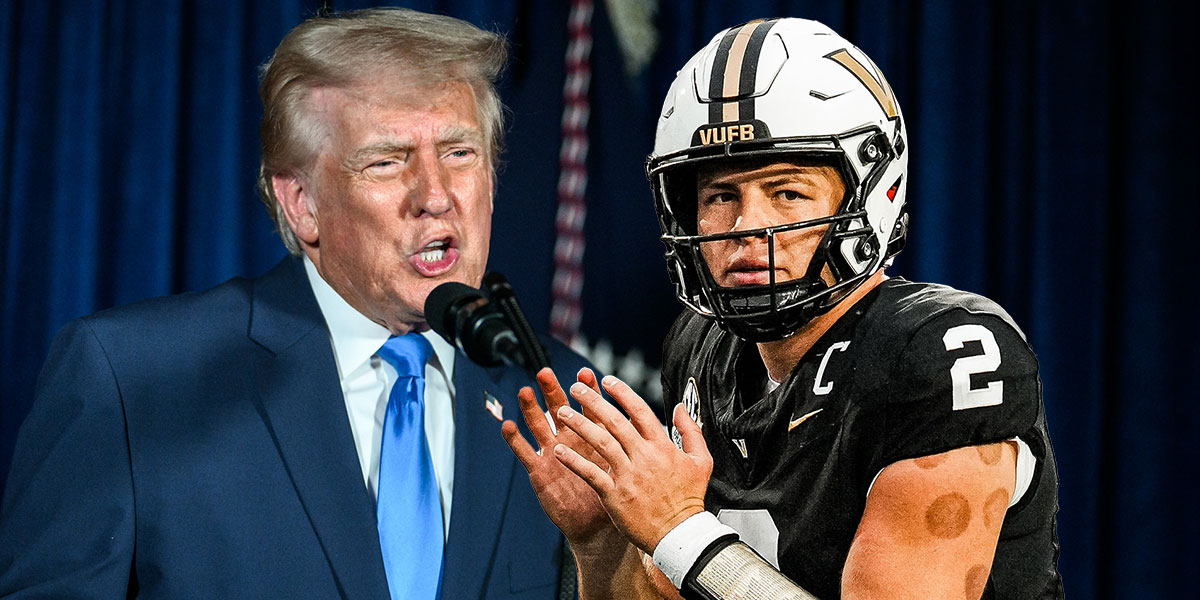
College football has had incredible developments over the last several years, from NIL deals, to the expanded college football playoff and everything in between, so much so that it’s led to more government involvement in the sport than ever before.
Not to mention, the transfer portal process became such an issue that President Donald J. Trump tried several methods to help the greater good of the game, including signing executive orders and encouraging Congress to come up with solutions.
Though, the latest request of the President comes from one of college football’s biggest stars.
Upon the release of the latest College Football Playoff rankings just days before the final reveal of the field, the Vanderbilt Commodores — who are 10-2 with losses to Alabama and Texas — came in at No. 14 with no real path to move into the 12-team field.
Commodores’ quarterback Diego Pavia — who will likely be a Heisman Trophy finalist — has pleaded with Trump to sign an executive order that would expand the field to 16 teams, allowing four from the SEC to be guaranteed, along with four at-large bids.
Needless to say, Pavia’s request is not going to get approved, but it does reflect the current chaos college football finds itself in when star players are openly begging the President to do something about a flawed system.
Whether Pavia’s in the playoffs or not, he and Vanderbilt have been one of the best stories in the nation this year, and he has made huge contributions to college football.
NIL
Ron Hart: Lane Kiffin and the art of the Irish exit
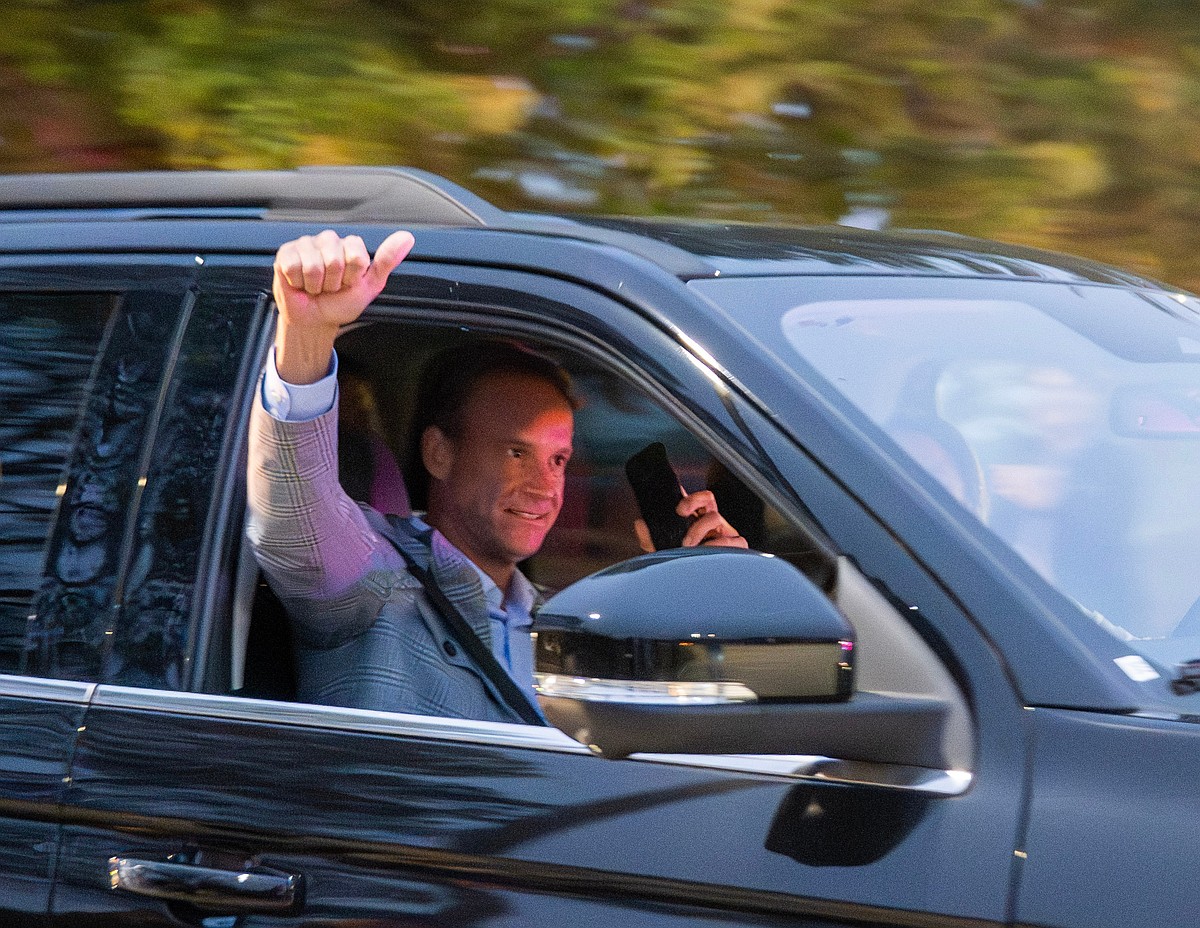
Like most Southerners, I love SEC football. A girlfriend broke up with me once over it — we dated just two seasons. She told me I loved college football more than her. To try to make her less upset, I told her I loved her more than ice hockey.
Ohio State is the team to beat this year, but the SEC is always in the mix. College football appeared right after the Civil War to give Southern and Northern states a safer way to keep on fighting.
Let me say up front that I like Lane Kiffin. I went to basketball schools, so I can be a fair arbiter here.
(IN THE NEWS: Lane Kiffin exits Ole Miss for LSU; Pete Golding takes over for Rebels)
Kiffin is one of a few head coaches with a sense of humor. He gives an interesting interview beyond the superficial platitudes most have been taught to spew. In leagues where coaches speak in measured tones of “process” and “culture,” he will push back and poke, all with a wry smile. He channels Coach Mike Leach, who was the greatest.
Kiffin wins, but loyal he is not. Some coaches build dynasties; he builds frequent flyer miles. He is the coach colleges love to hate. He feeds on it. He does not care. I like that.
The worst form of thinkers, the NCAA, politicians and college presidents, have designed the current NIL/college football landscape. These people who are used to making bad decisions with other people’s money have created a convoluted mess.
Jimmy Sexton, the “coach’s agent” who has a virtual monopoly in the space, owns these colleges. With his $80 million coach buy-outs paid by colleges with tuition going up at twice the rate of inflation, I’m surprised some state has not pursued an antitrust case against him.
Lane left for LSU, where he might find a home. Louisiana has a long history of rogues and reprobates, and not just in politics. Sixty percent of Louisiana is under water, the other 40% is under indictment.
Without an in-state rival to turn him in, and in the rough and tumble nature of Louisiana, Kiffin might thrive. The last LSU coach, Brian Kelly, left for health reasons. Fans were sick of him.
Kiffin’s decision to move, he said, relied on his former boss, Nick Saban. He once described Saban as “like an ex” in a divorce settlement. The man is a conundrum wrapped in a kerfuffle.
(IN THE NEWS: Ole Miss loses coach but moves up a spot in College Football Playoff rankings)
His departure from Ole Miss was a masterpiece of awkward timing, as the team was preparing for the College Football Playoff. As the fan base wailed in betrayal, Kiffin asked if he could coach in the playoffs. Talk about your haughty toddy! Ole Miss said no. As he left Ole Miss in a jet, he told several assistant coaches to get on the plane with him now or no job. Baller move. Five went.
LSU will take its place in this year’s playoff as it has recently: on the couch watching it.
A winning coach can name his terms. UNC signed Bill Belichick with the agreement that his girlfriend would be given a snap bid to pledge Chi Omega and live in the sorority house. Sadly, Belichick’s first loss was 73 to 22, calling even more attention to the relationship.
SEC football is a big deal. Trump attended the Georgia vs. Alabama game. Vanderbilt would not let Trump come for fear he would deport their QB, Diego Pavia. Maybe it would be covered on ESPN Deportes?
Amid the chaos, Vanderbilt has been on the rise. Their coach stayed; they flipped the No. 1 QB commitment from Georgia. Vanderbilt hopes to build the kind of football team their women’s bowling team can be proud of.
Football might be the “bread and circus” of our times. It goes beyond North and South, state versus state. It’s a religious experience. I always told my kids that an atheist is a person who watches Notre Dame play Southern Methodist and doesn’t care who wins.
Contact Ron Hart, a syndicated op-ed satirist, author and TV/radio commentator, at Ron@RonaldHart.com or X @RonaldHart.
NIL
How Much Kalani Sitake Turned Down From Penn State to Stay at BYU

Earlier this week, it appeared that Kalani Sitake might be the next coach at Penn State. Instead, he opted to remain at his alma mater BYU, as it prepares to face Texas Tech for the Big 12 championship. If the Cougars win Saturday’s game at AT&T Stadium, they will punch their ticket to the College Football Playoff.
“If I’m being honest, I just wanted to be here a long [time],” Sitake said after announcing his extension at BYU, his alma mater. “… It’s hard to leave when you have something so special and you have amazing people that support us.”
The decision came after an outpouring of support from the BYU community, which Sitake’s wife referred to as a “love bomb.” The monied parties around the Cougars program evidently mobilized as well, with Crumbl Cookies CEO Jason McGowan tweeting Monday that it was “time for me to get off the sidelines and get to work” as the Sitake/Penn State situation was unfolding.
Now we have an idea of what the finances behind Sitake’s decision looked like. In a Thursday story on the recruiting battle between BYU and Penn State, Richard Johnson of CBS Sports reported that the contract offer from Penn State that the veteran coach rebuffed was “north of $10 million per year,” more than double Sitake’s pre-extension estimated BYU salary of around $4 million per year.
“Sitake’s extension at BYU is set to make him the highest paid coach in the Big 12 besides Colorado’s Deion Sanders, who makes $10.8 million on average,” Johnson reports.
Pete Nakos of On3 reported Tuesday that Sitake is expected to take home between $9 million and $9.5 million per year from BYU, with an additional $10–$15 million in NIL payments committed to the football program on top of the school’s slice of program revenue sharing. Schools are currently allowed to distribute up to $20.5 million to athletes across all spots for the academic year, though NIL outside NIL payments on top of that total are permitted.
SI College Football Newsletter. Get SI’s College Football Newsletter. dark. FREE
Sitake, a native of Tonga, played fullback at BYU in 1994 and, after an LDS mission, from ‘97 to 2000 under legendary Cougars coach LaVell Edwards. After a brief NFL stint, he entered coaching in ‘01, handling defensive backs at Eastern Arizona. He returned the next year to BYU as a graduate assistant.
After stints on staff at Southern Utah, Utah and Oregon State, Sitake returned to his alma mater in 2016 as head coach. In a decade leading the Cougars, he is 83–44 with a 17–10 conference record since the program joined the Big 12 in 2023. The program is 22–3 (15–3) over the last two seasons, giving him his third and fourth 10-win seasons.
More College Football on Sports Illustrated
Listen to SI’s new college sports podcast, Others Receiving Votes, below or on Apple and Spotify. Watch the show on SI’s YouTube channel.
-

 Rec Sports2 weeks ago
Rec Sports2 weeks agoFirst Tee Winter Registration is open
-

 Rec Sports1 week ago
Rec Sports1 week agoFargo girl, 13, dies after collapsing during school basketball game – Grand Forks Herald
-
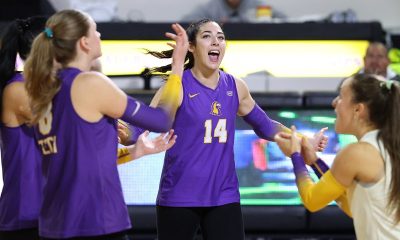
 Sports2 weeks ago
Sports2 weeks agoVolleyball Recaps – November 18
-

 Motorsports1 week ago
Motorsports1 week agoCPG Brands Like Allegra Are Betting on F1 for the First Time
-

 Motorsports2 weeks ago
Motorsports2 weeks agoF1 Las Vegas: Verstappen win, Norris and Piastri DQ tighten 2025 title fight
-
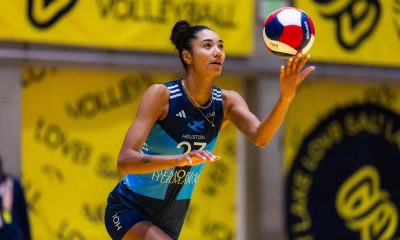
 Sports1 week ago
Sports1 week agoTwo Pro Volleyball Leagues Serve Up Plans for Minnesota Teams
-

 Sports1 week ago
Sports1 week agoUtah State Announces 2025-26 Indoor Track & Field Schedule
-
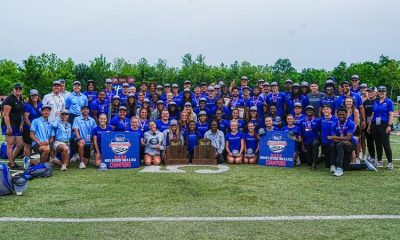
 Sports1 week ago
Sports1 week agoSycamores unveil 2026 track and field schedule
-

 Sports1 week ago
Sports1 week agoTexas volleyball vs Kentucky game score: Live SEC tournament updates
-

 NIL4 days ago
NIL4 days agoBowl Projections: ESPN predicts 12-team College Football Playoff bracket, full bowl slate after Week 14
















